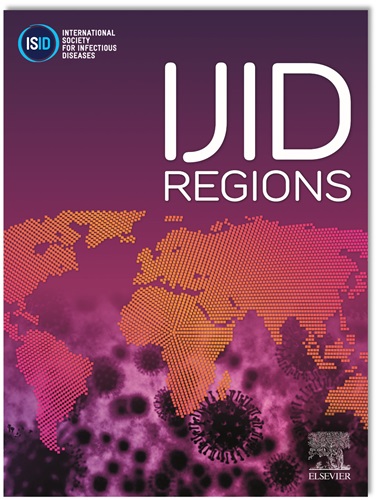Whole genome analysis reveals the major pathotypes and predominant antimicrobial resistance genes in Escherichia coli strains from India
IF 4.8
2区 医学
Q1 INFECTIOUS DISEASES
引用次数: 0
Abstract
Introduction
Escherichia coli is one of the leading causes of infectious diseases worldwide and the emergence of multi-drug resistant phenotypes in developing countries has raised concern. The present study concerns the prediction of predominant pathotypes, sequence types and pan-genome analysis of Escherichia coli clinical isolates from India.
Methods
A total of 100 strains of E. coli were selected for WGS analysis from different clinical samples. Whole genome sequencing was undertaken using MiSeq followed by read quality analysis, trimming and de novo assembly using FastQC, Trimmomatic and Spades respectively. Pan-Genome analysis was performed using Roary and phylogenetic tree was visualised in iTOL. The SNP prediction was done with Snippy and analysed using gubbin tool. The assembled contigs were used to BLAST against CARD, PlasmidFinder and VRDB databases to identify various resistance markers, plasmid types and virulence genes. WGS data was also used to perform in silico serotyping using the ECTyper tool.
Results
The phenotypic antimicrobial resistance to third generation cephalosporins was 82.1% (193/235) whereas 169 (71.9%) strains were found to be resistant to amikacin. The WGS analysis revealed the presence of one to 61 resistance genes per strain. The most prevalent resistance mechanism was beta-lactamases, which included blaCTX-M-15 149/235 (63%), and blaTEM-1B 117/235 (50%). Sulphonamide resistance genes were detected in 45.8% of the isolates, wherein two were commonly known transferable resistance conferring genes, sul1 (72%), and Sul2 (78%). Trimethoprim resistance genes were observed in 48% of the isolates and they are predominantly dfrA genes (dfrA12, dfrA17, dfrA1, dfrA14 and dfrA7). Tetracycline resistance genes were seen in 70.8% of the isolates. The most prevalent tetracycline resistance genes were tet(A) (37%) and tet(B) (32%) and tet (j) (8%). Overall, 56 different types of plasmids were observed and the most common plasmid types included IncFIA (83%) followed by Col(BS512) (49%) and Col156 (24%). Multilocus sequence typing (MLST) analysis revealed high levels of species diversity with a total of 52 different sequence types (STs). The dominant sequence type was ST167 (31/235), followed by ST131 (29/235) and ST405 (18/235).
Discussion
The increased affordability and accessibility of whole genome sequencing (WGS) have made it a widely used tool in bacterial research as well as clinical diagnostics. Our results reveal the good efficacy of in silico analysis to determine antimicrobial resistance and pathotypes in E.coli clinical isolates. Despite genetic diversity amongst the isolated strains, the phylogenetic tree was able to diffusely group the strains belonging to different antimicrobial resistance phenotypes.
Conclusion
WGS provides comprehensive insights into various aspects of pathogen behaviour which can greatly aid in the management and tracking of pathogen spread. However, preventive measures and surveillance on antimicrobial usage are essential to combat antimicrobial resistance.
求助全文
约1分钟内获得全文
求助全文
来源期刊
CiteScore
18.90
自引率
2.40%
发文量
1020
审稿时长
30 days
期刊介绍:
International Journal of Infectious Diseases (IJID)
Publisher: International Society for Infectious Diseases
Publication Frequency: Monthly
Type: Peer-reviewed, Open Access
Scope:
Publishes original clinical and laboratory-based research.
Reports clinical trials, reviews, and some case reports.
Focuses on epidemiology, clinical diagnosis, treatment, and control of infectious diseases.
Emphasizes diseases common in under-resourced countries.

 求助内容:
求助内容: 应助结果提醒方式:
应助结果提醒方式:


